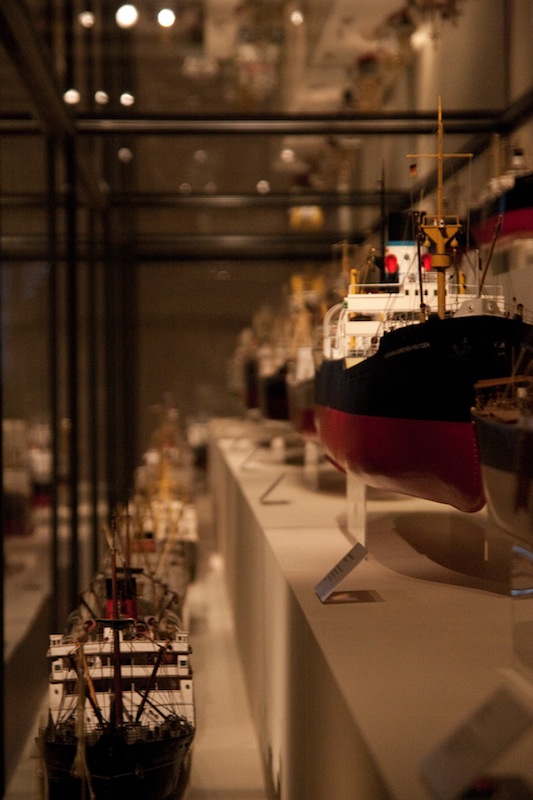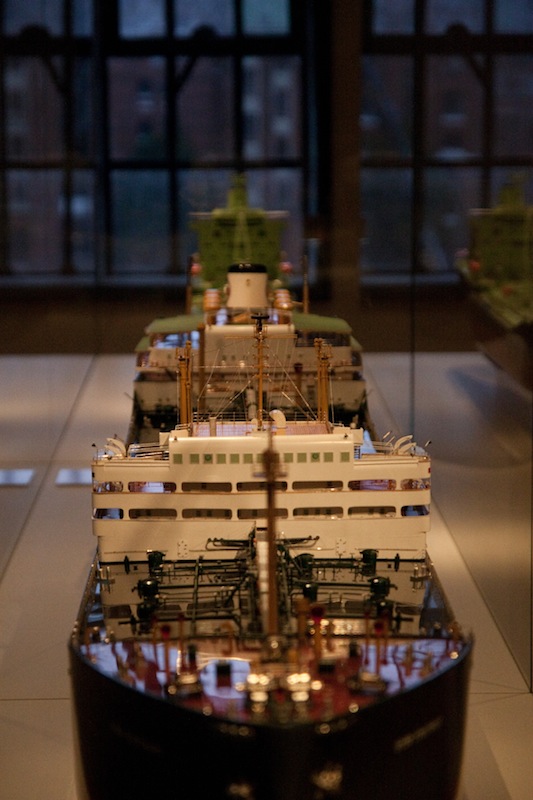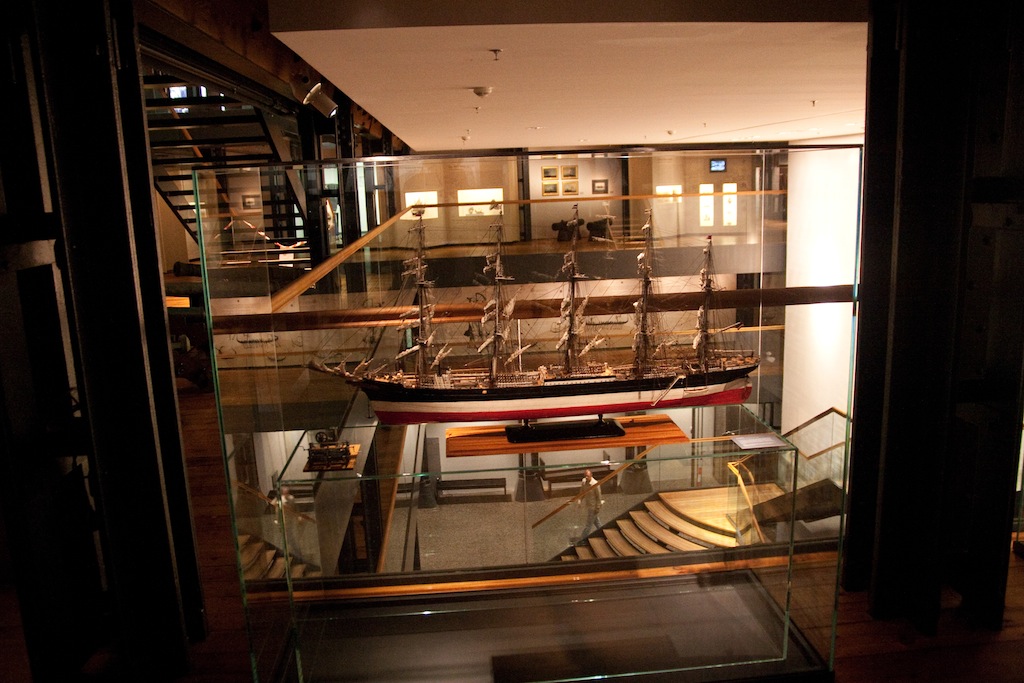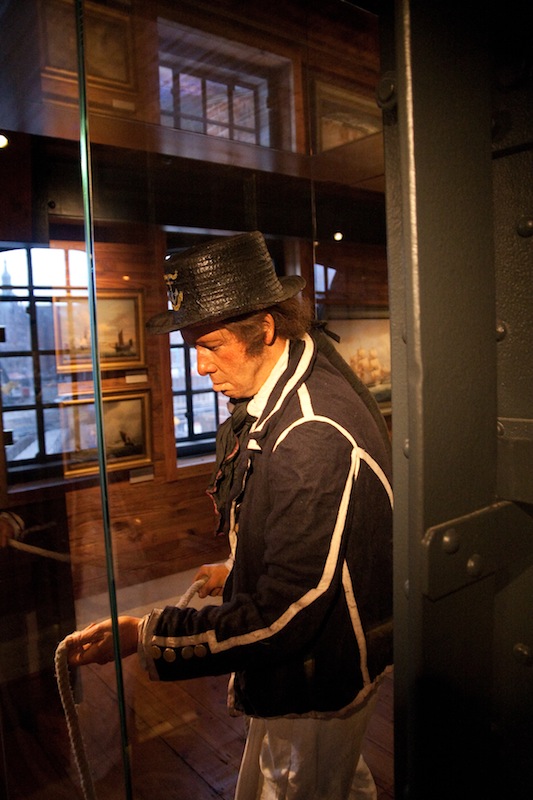The Maritime Museum

On Tuesday the fifteenth of March, I had a chance to visit the Maritime Museum in Hamburg, in what can only be described as a seafarer’s paradise. Filled with countless items, facts, and stories relating to sea life, it really is worth the price of admission. There are nine floors in total, or decks as they are aptly named in the museum. The first deck sets the mood perfectly, with a large screen filled with waves greeting you as you enter. What follows is a look at how important nature (or more specifically, astronomy) was to a ship’s crew, how the stars were essential in guiding a ship to its destination. Naturally, when you think of sea travel, you think of the compass and telescope. Not surprisingly, the museum has an abundance of compasses and telescopes to be looked at, from big to small and old and new. What I found most impressive on this deck however, was the model of the Queen Mary 2, built from 780.000 Lego pieces, which took 1.200 hours to make, from January to June 2008. Even though it is a model, it manages to convey the vastness and greatness of the ship.


As I moved up the decks, I was starting to feel quite tired but nevertheless determined to see as much as I could. I was happy I did. As I approached the 7th deck, I got a look at what lies underneath the sea. It was truly fascinating, especially the display of fish and their now decayed corpses stored in jars. It’s incredible to think of the different types of fish in the sea, the different physical features they have. Fish we would normally never have a chance to see, which makes you think about what great mysteries lie in the sea.

So, that is the end of my tour of the Maritime Museum, a museum filled with so much information and history that at times it can be a bit overwhelming, but definitely a must see. I want to end with a poem my mother wrote about the Hanseatic League, a league that relied very much on the North Coast of Europe in the late middle ages.
European Unions
In days gone by you had to try
And control the trade at sea.
It was, of course, the easiest way
Of getting from A to B.
Around the Baltic and beyond
Arose battles of fierce competition
And Viking traders had to compete
With those of a new conviction.
These traders were called the Hansa League
And maintained a successful monopoly
Controlling trade in all the towns
From Novgorod to Visby.
Their cob ships were of a new design
Constructed to carry cargo
So they could swiftly move grain and wares
From Luebeck north to Malmø.
Buildings of this former League
Can still be seen in Bergen
Beautiful wooden warehouses
Stretched along the Bryggen.
Unused now for stockfish
For trading wares and such
This league of traders gone now …
Don’t hear about them much.
M. Green, 2010